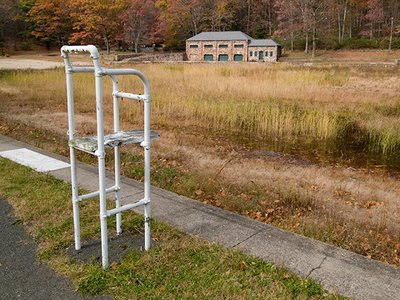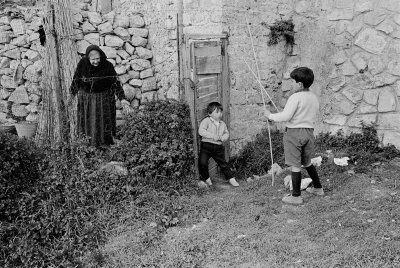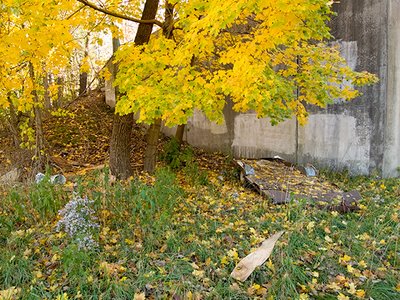Thursday, November 30, 2006
Saturday, November 25, 2006
Fishing Village
Sperlonga is a place I remember as a vertical village. The town clung to the side of a cliff, a warren of stucco buildings connected by vertiginous stairs. The cliff's feet sat in the sea and fishing boats were constantly coming and going. It's recorded that the Emporer Tiberius had a summer villa here. I think the two boys are about to go fishing.
Wednesday, November 22, 2006
Graphic Novel
Traveling on a scholarship in 1969, I was startled to find that in Japan adults everywhere could be found reading comic books. The graphic novel has made its way to the United States since then, but as someone who'd never read comics even as a kid, back then I found the phenomenon quite baffling.
Sunday, November 12, 2006
Saturday, November 11, 2006
Friday, November 10, 2006
Wednesday, November 08, 2006
Tuesday, November 07, 2006
Sunday, November 05, 2006
Thursday, November 02, 2006
Digital Color Photography
In a recent comment, Kent Wiley said, "You may have written about your progression to digital color elsewhere, but I'd be curious to hear about it again." It might be of some interest to others, so here goes:
Most of my personal work has been in monochrome, not because I don't like color, or color photography, but because until very recently I never really liked any of the color print media. I have an absolutely visceral reaction against the tone, color-makeup, and surface of Cibachrome/Ilfochrome. Reversal prints and internegative prints from color transparencies leave a lot to be desired, RA prints from color negatives can be quite wonderful in tone and color, but have the inescapably nasty RC surface. I made a serious study of dye transfer at one point, and decided that one lifetime was not enough to both master that process and spend enough time on photography itself. But I was always making color photographs for clients—I can't guess how many rolls of Kodachrome and, later, Fuji Provia I've shot—and often really liked the final results from the four-color offset press.
Here's a snapshot of some promotional mailers I did for my commercial business back in the mid-80s:

Note the devilishly clever ad copy.
Nearly ten years ago I wrote a magazine article predicting that before long digitally produced color prints would surpass the quality of Ilfochrome and RA paper prints, and we might even be making these prints from digital captures rather than scans. This has happened in the past few years. Color prints on "fine art" watercolor papers prepared for digital printing are capable of wonderful color, tone, and detail, all with a surface quality I find vastly preferable to RC photo paper.
However, I was not an early adopter of digital capture, largely because at the time I was concentrating primarily on fine art photography rather than commercial work and couldn't see any way to amortize, with a low volume of assignment work, early digital equipment which was ghastly expensive and apt to be obsolete in months. Then in the spring of 2004 a commercial publishing project came my way, a large project, that had to be done with digital capture, not film. It was big enough that I could buy a decent outfit with about half the fees and so be sure not to wind up behind the 8-ball even if the equipment became obsolete by the time the book was finished. So I took the plunge, and the assignment.
As soon as the camera arrived I ran around shooting real world scenes with it, on the assumption that natural lighting was a far more severe test of its capabilities than the tightly controlled artificial lighting I'd use on the book illustrations. Thanks in part to my intense study of an excellent guide to RAW capture workflow by Jeff Schewes, I was immediately bowled over by the quality of the digital files, and of small prints made from them with a good inkjet printer. It was obvious that these digital captures had far better tonal range than chrome films, though less than color negatives. The more I learn about RAW processing—and the better each successive generation of ACR becomes—the more I can get from the digital captures. I'm not happy with digital captures interpolated more than a small amount larger than the native file, but luckily I've always loved small, intimate prints. After all, I've made thousands of pictures with an 8x10 camera, not to be able to make huge enlargements, but to make contact prints in platinum.
So I've been exploring color work intensively for a couple years now, using digital capture, and in many cases working with ideas and themes that have been in the back of my mind for decades. As a last note, I've gotten so interested in color that there is some work that I want to present as really large prints, which means I'll probably do the shooting with 8x10 and then scan the color negatives.
Subscribe to:
Comments (Atom)





























